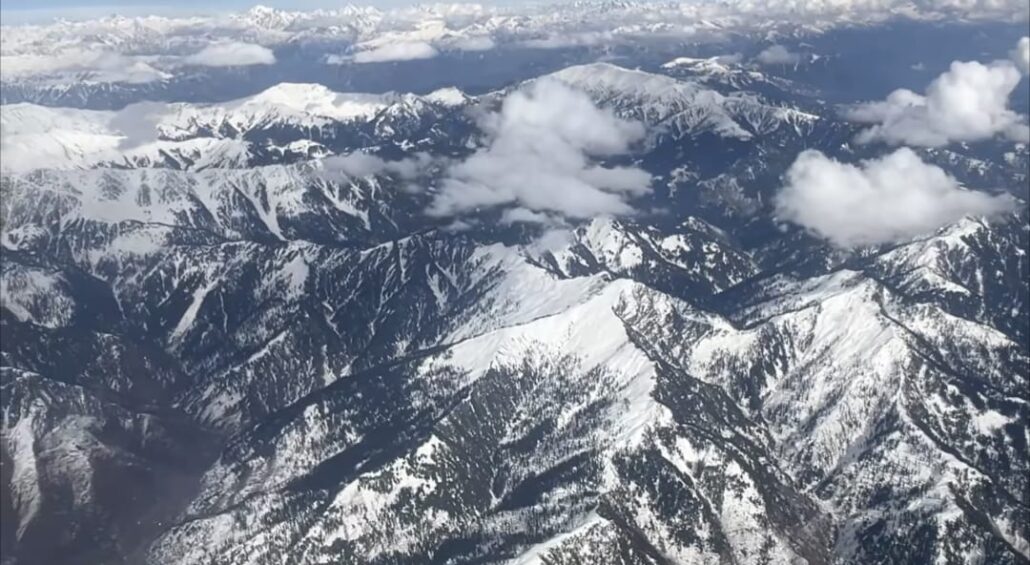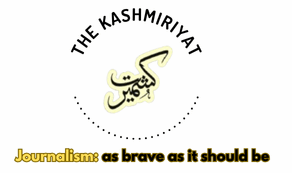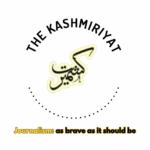
Bhat Yasir
Kashmir’s Pir Panjal mountains, typically ablaze with snow at this time of year, present a haunting spectacle – largely bare and exposed, a stark departure from their usual winter splendor.
The patches of white were scattered, struggling to hold onto the rugged slopes. From above, the lack of snow was glaring, a stark warning of the water crisis that experts have long feared.
The Meteorological Department in Srinagar has recorded an 80% precipitation deficit this winter, marking one of the driest spells in recent memory.
“February is usually a month of heavy snowfall, but this year, the mountains remain mostly bare. This will have severe consequences for our rivers, lakes, and overall water availability,” said Mukhtar Ahmed, Director of MeT Srinagar.
The Jhelum River, the lifeline of the Kashmir Valley, is already flowing at levels below the average for this time of year.
The river’s southern tributaries—especially in Anantnag, Kulgam, and Pulwama—are witnessing drastically reduced flows, a worrying sign for both agriculture and drinking water supplies.
Sameer Ahmad, a hydrologist studying Kashmir’s water resources, attributes this crisis to a mix of global climate change and regional environmental degradation.
“We are seeing an accelerated shift in weather patterns—less snowfall, more erratic rainfall, and longer dry spells. Snow acts as a natural reservoir, gradually melting to sustain rivers through summer. Without it, we could be facing drought-like conditions in the coming months,” he explained.
He further warned about the impact on the region’s fragile mountainous ecosystem. “With less snow cover, the soil on our mountain slopes is more exposed to erosion. This leads to increased landslides, loss of vegetation, and even long-term changes in local weather conditions.”
Former Chief Minister Omar Abdullah echoed these concerns, warning, “Jammu Kashmir are staring at a severe water crisis this year. If the current trend continues, we need urgent measures to conserve water and manage our resources efficiently.”
Looking crisis
One stark example of the crisis is the Kolahoi Glacier, Kashmir’s largest, which has shrunk by over 25% in the last few decades. This glacier feeds the Lidder and Jhelum rivers, but with reduced snowfall and rising temperatures, its retreat is accelerating.
“If Kolahoi continues to shrink at this rate, we could see significant disruptions to water supplies in South Kashmir,” Sameer Ahmad noted. “Less glacial runoff means lower river levels in summer, just when demand for irrigation and drinking water is at its peak.”
Residents in south Kashmir are already feeling the impact. Springs that have supplied villages for centuries are now running dry. At Achabal, an 80-year-old woman, Saja Begum, was seen lamenting in a viral video: “Oh! holy spring, what have we done to you? You have stopped water to us.”
Bashir Ahmad, a farmer in Pulwama, fears for his crops. “We rely on spring-fed irrigation channels. If this continues, we may lose entire harvests.”
The postponement of the National Winter Games in Gulmarg due to a lack of snow further underlines the scale of this crisis. “For the first time, we had to delay the event because there simply wasn’t enough snow,” said Rauf Tramboo, President of the Winter Games Association of J&K.
Experts warn that if the dry spell continues into spring and summer, Kashmir could face one of its worst water crises in decades.
Conservation measures, afforestation efforts, and responsible water management will be crucial in mitigating the looming disaster.
With shrinking glaciers, disappearing snowfields, and a parched Jhelum, Kashmir’s landscape is changing rapidly—posing an existential challenge to both its people and its fragile ecology.




